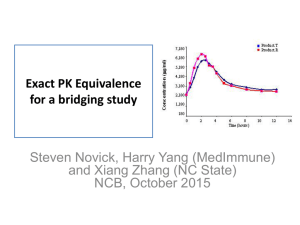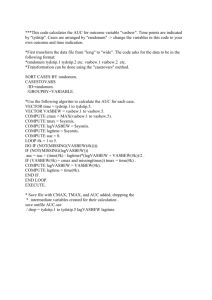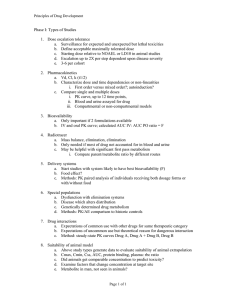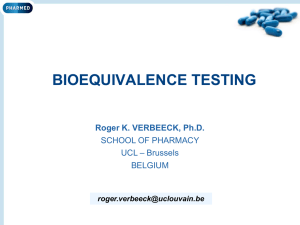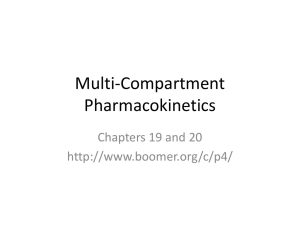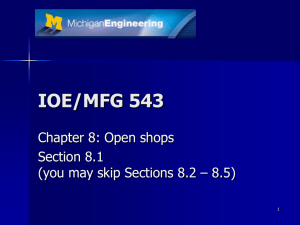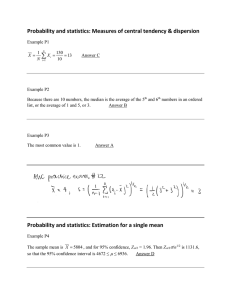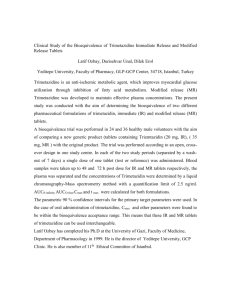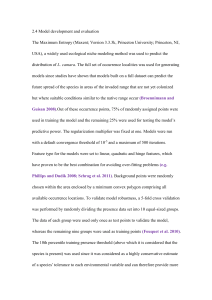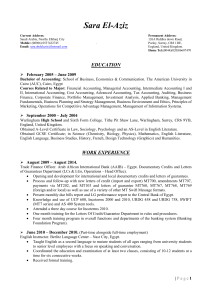Bioequivalence Data Checklist for Drug Submissions
advertisement
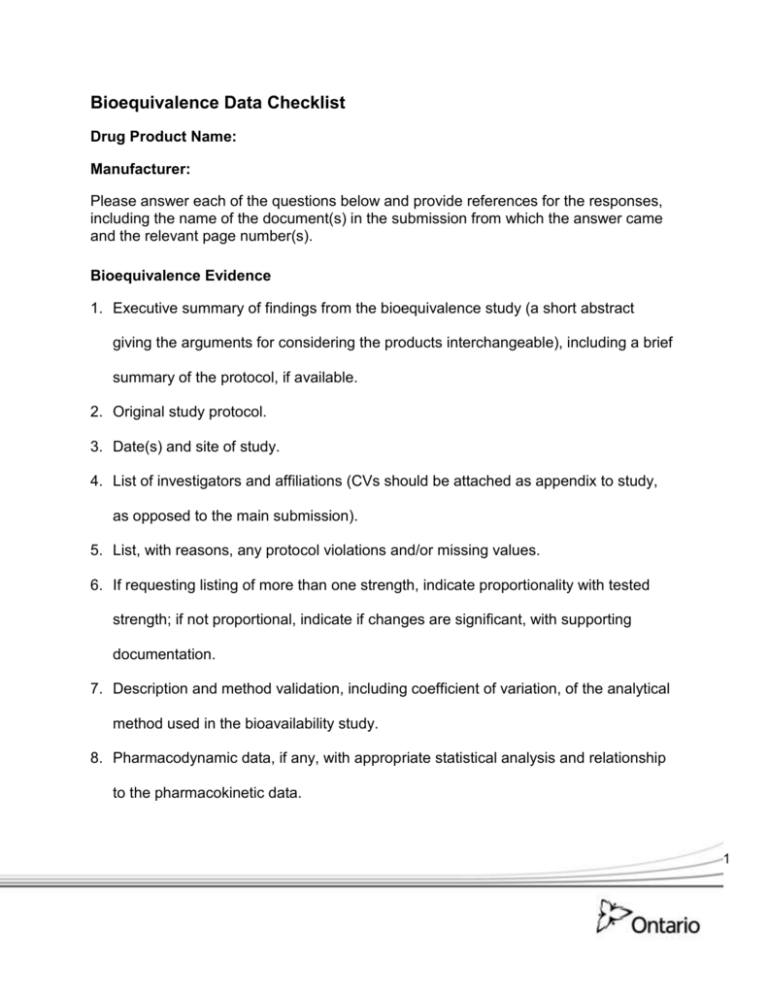
Bioequivalence Data Checklist Drug Product Name: Manufacturer: Please answer each of the questions below and provide references for the responses, including the name of the document(s) in the submission from which the answer came and the relevant page number(s). Bioequivalence Evidence 1. Executive summary of findings from the bioequivalence study (a short abstract giving the arguments for considering the products interchangeable), including a brief summary of the protocol, if available. 2. Original study protocol. 3. Date(s) and site of study. 4. List of investigators and affiliations (CVs should be attached as appendix to study, as opposed to the main submission). 5. List, with reasons, any protocol violations and/or missing values. 6. If requesting listing of more than one strength, indicate proportionality with tested strength; if not proportional, indicate if changes are significant, with supporting documentation. 7. Description and method validation, including coefficient of variation, of the analytical method used in the bioavailability study. 8. Pharmacodynamic data, if any, with appropriate statistical analysis and relationship to the pharmacokinetic data. 1 9. Data on all subjects: a. Age, sex and any other demographic information deemed relevant. b. AUCt, AUC’s, Cmax, Tmax and any other pharmacokinetic parameters computed from potency corrected data for the drug products tested. c. Time-concentration curve calculated with potency, uncorrected data for each individual, for the drug products tested. d. Adverse reactions, if any, tabulated by drug product. 10. Data analysis: a. Means, standard deviations, coefficient of variations for each of the parameters, by drug product. b. Analysis of Variance used to derive the standard error in computing the confidence interval, including sources of variation for drug period, sequence and subjects within sequence. c. 90% confidence intervals on the appropriate scale for the ratios of the means for AUCt, AUC’s, Cmax. d. A statement of conclusion and reasons for the conclusion. 11. Other relevant data/information (please describe). Note: The Ministry has harmonized its practices with the Therapeutic Product Programme (TPP) of Health Canada, and has the same statistical requirements for AUC and Cmax for drugs with uncomplicated characteristics. The following statistical requirements are used to assess the bioavailability studies for drugs with uncomplicated characteristics: confidence intervals for AUC at the 90% level, and comparison of mean Cmax. 2
